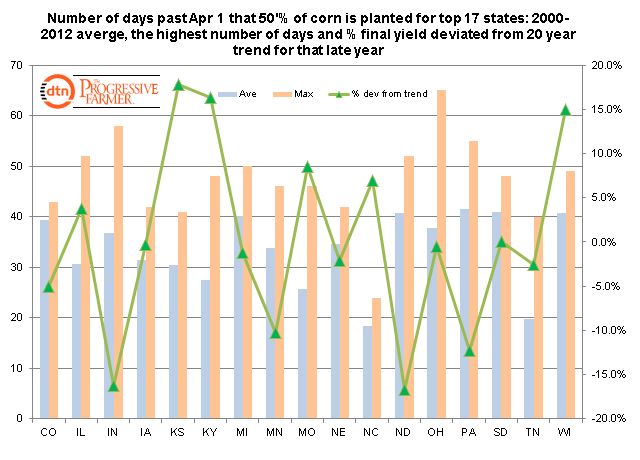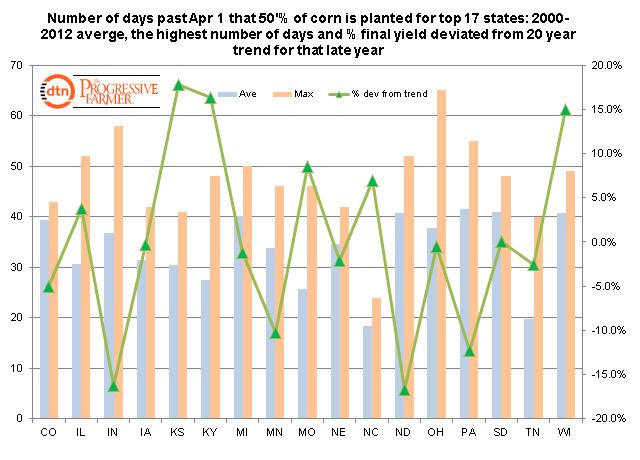Fundamentally Speaking
Days Past Apr 1 That Half the Corn Crop is Planted in Top States
The much promised warming and drier trend in the Midwest keeps getting pushed back and after recent heavy rains it appears that for much of that region, any real progress in corn plantings will not be seen until the first part of May at the earliest.
We saw what early plantings amid warm and dry conditions did for U.S. corn yields last year so many say bring on the rains.
Nonetheless, the continued delays suggest that some intended corn acreage might not get in the ground while also bringing into play the depressing impact on yields that are often associated with tardy corn seedings.
P[L1] D[0x0] M[300x250] OOP[F] ADUNIT[] T[]
With regard to this latter point, using data from the 2000-2012 seasons, the accompanying graphic shows the average number of days past April 1 that 50% of corn has been planted in 17 of the top 18 states and the greatest number of days it took to reach that 50% mark.
To what percent final yields that late year deviated from the 20-year trend is plotted on the right hand axis.
Only Texas of the 18 top corn producing state is not included as much of their crop is in the ground by April 1.
As way of example, the average number of days for 50% of the Illinois crop to be planted is 31 or May 1with the latest being 52 days, which is May 12.
The final yield in Illinois that year was actually 3.8% above trend. On the other hand in Indiana the average number of days for half the crop to be planted is 37 or May 7 but there was one year when it took 58 days past April 1, or May 28 for half the crop to be planted and final yields that year were 16.2% below trend.
The data shows that for the latest planted years for all 17 states, about half were still able to achieve trend or higher yields.
Much depends on weather for the rest of the growing season for in 2009, a year of very late plantings, final yields in the U.S. and a number of states were record high.
This was due to good growing conditions for the rest of the season including reasonable temperatures in late July and August when the crop was pollinating at a later than usual date and more important, a very late first autumn freeze that allowed this late planted crop extra time to mature.
Note that for these 17 states, the average 50% planted rate ranges from April 18 to May 12.
(KA)






Comments
To comment, please Log In or Join our Community .